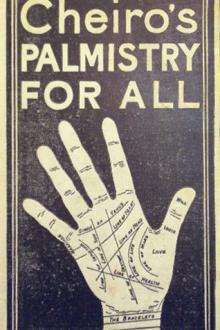The Diary - Samuel Pepys (red white and royal blue hardcover txt) 📗

- Author: Samuel Pepys
Book online «The Diary - Samuel Pepys (red white and royal blue hardcover txt) 📗». Author Samuel Pepys
See note 2519. ↩
Henry VIII gave to the Fraternity of Artillery for their exercise ground a field belonging to the dissolved priory and hospital of St. Mary Spital, beyond Bishopsgate, known as the Teazle Close. The site is now marked by Artillery Lane and Artillery Street, Bishopsgate Street Without. ↩
From Louis XIV. See April 28th. ↩
Thomas Papillon, Esq., of Lubbenham, in Leicestershire, who purchased the manor of Acrise, in Kent, in 1666. He was an eminent merchant of London, and Master of the Mercers’ Company in 1698; and was M.P. for Dover, temp. Charles II, and for London in the 10th of William III. The case of Mr. Papillon related to a petition of the Company of Wine Merchants, concerning brandy, alias strong water, against the Farmers of Excise, of which some account is given in Anchitell Grey’s Debates, vol. i, p. 237. —B. ↩
The Island Princess, a tragicomedy by Fletcher, was revived in 1669 as The Island Princess, or the Generous Portugal. The King of Tidore was acted by Kynaston, and Quisara, the Island Princess, by Mrs. Marshall. ↩
Apparently the play by Lord Orrery, which Pepys first saw acted on September 28th, 1664. ↩
William Douglas, ninth Earl of Morton, who had married Lord Middleton’s daughter Grizel. —B. ↩
Margaret, daughter and co-heir of William Hollidaie or Haliday, Alderman and Lord Mayor of London, widow of Sir Edward Hungerford, parliamentary commander, who died, s.p., 1648. She survived till 1673. Hungerford House was pulled down by the spendthrift Sir Edward Hungerford, and Hungerford Market was built on the site in 1680. The market was rebuilt in 1831–33, and the Charing Cross station of the South Eastern Railway now marks the site. ↩
The work here mentioned is a bitter satire against the Court Rome, written in Italian, and attributed to Gregorio Leti. It was first printed in 1667, without the name or place of printer, but it is from the press of the Elzevirs. The book obtained by Pepys was probably the anonymous English translation, “Il Nipotismo di Roma: or the history of the Popes nephews from the time of Sixtus IV to the death the last Pope Alexander VII. In two parts. Written originally Italian in the year 1667 and Englished by W. A. London, 1669” 8vo. From this work the word Nepotism is derived, and is applied to the bad practice of statesmen, when in power, providing lucrative places for their relations. ↩
Clarendon, then an exile in France. ↩
Juan de Mariana, Historiæ de Rebus Hispaniæ libri xx. First published at Toledo in 1592. Ten books were subsequently added, 1605, and the work was completed to the accession of Philip IV in 1624. The author was induced by its success to translate his book into Spanish. The first part of the Historia de España appeared in 1601, and it was completed in 1609. Frequently reprinted both in Latin and in Spanish since 1624. J. Stevens produced an English translation in 1699. ↩
Isabella, daughter of William Howard, Viscount Stafford, third wife to John Powlett, fifth Marquis of Winchester. —B. ↩
John, Lord Bellassis, was thrice married: first, to Jane, daughter of Sir Robert Boteler, of Woodhall, Herts; secondly, to Ann, daughter of Sir Robert Crane, of Chilton, Suffolk; thirdly, to Lady Anne Powlett, daughter of the above-named Marquis of Winchester (by his second wife, Lady Honora de Burgh), and who is the person referred to by Pepys. —B. ↩
Henry Oldenburgh, secretary of the Royal Society. ↩
A Description of an Instrument invented many years ago by Dr. Christopher Wren, for drawing the outlines of any object in Perspective. Published in the Philosophical Transactions, No. 45, p. 898 (vol. iv, 669); reprinted in Hutton’s Abridgment, vol. i, p. 325. ↩
See note 4337. ↩
See note 2701. ↩
See note 4503. ↩
Sir John Robinson. ↩
Andronicus, or the Unfortunate Politician: showing Sin slowly punished, Right surely rescued. … By Thomas Fuller, B.D. London, 1646; second edition, 1646; third edition, 1649. There is a review of the book in the Retrospective Review, second series, vol. i, pp. 396–406. ↩
Sir Edward Scott, made LL.D. at Oxford, 1677. ↩
See May 1st, 1662. ↩
The Conde de Dona. ↩
See ante, November 16th, 1668. ↩
Probably on Stroud Green, and known by the name of Stapleton Hall, originally the residence of Sir Thomas Stapleton, of Gray’s Court, Oxon, Bart. The building, on which were his initials, with those of his wife, and the date, 1609, was afterwards converted into a public-house, with the sign of the Green Man, and a century ago had in the front the following inscription:
“Ye are welcome all
To Stapleton Hall.”
A club, styling themselves “the Lord Mayor, Aldermen, and Corporation of Stroud Green,” formerly





Comments (0)